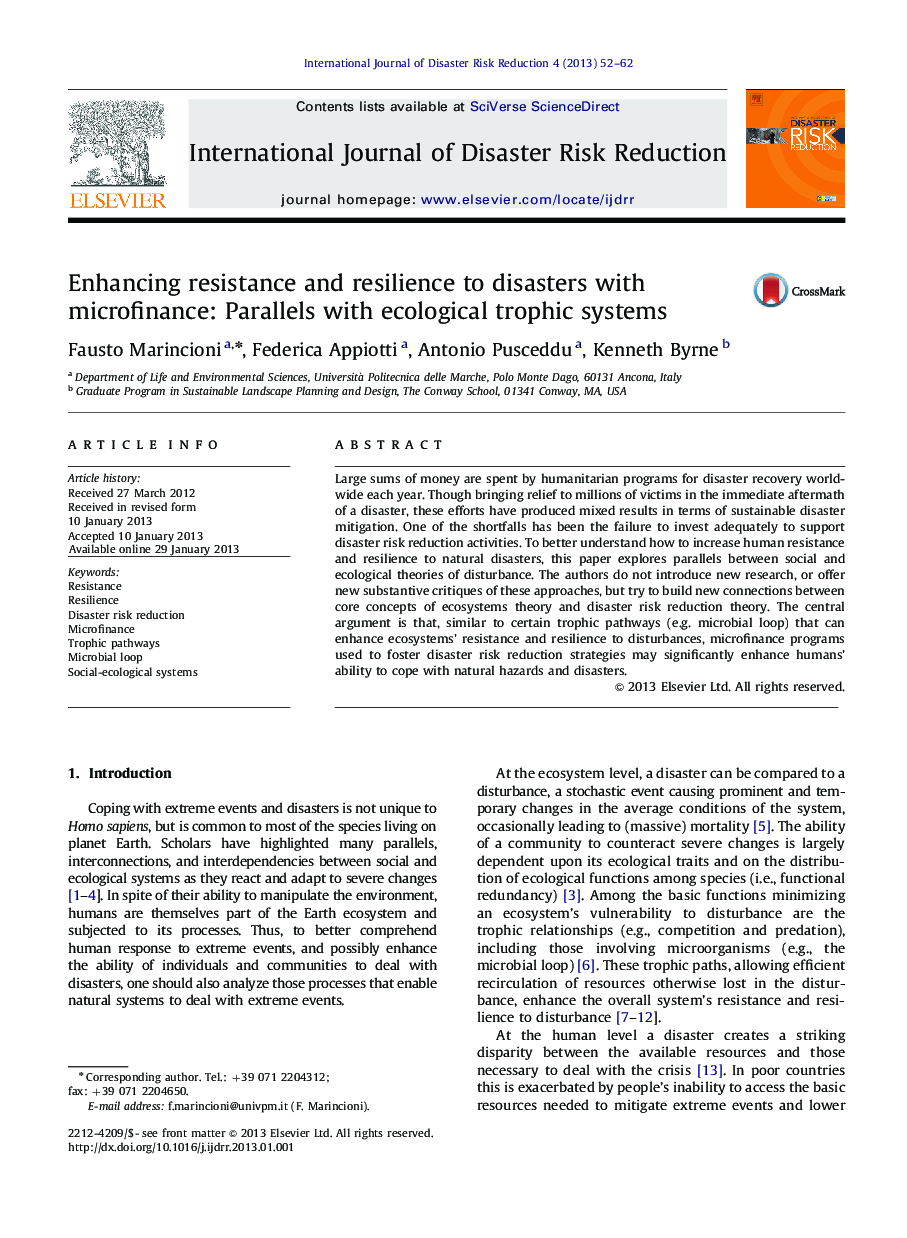| Article ID | Journal | Published Year | Pages | File Type |
|---|---|---|---|---|
| 1055283 | International Journal of Disaster Risk Reduction | 2013 | 11 Pages |
Large sums of money are spent by humanitarian programs for disaster recovery worldwide each year. Though bringing relief to millions of victims in the immediate aftermath of a disaster, these efforts have produced mixed results in terms of sustainable disaster mitigation. One of the shortfalls has been the failure to invest adequately to support disaster risk reduction activities. To better understand how to increase human resistance and resilience to natural disasters, this paper explores parallels between social and ecological theories of disturbance. The authors do not introduce new research, or offer new substantive critiques of these approaches, but try to build new connections between core concepts of ecosystems theory and disaster risk reduction theory. The central argument is that, similar to certain trophic pathways (e.g. microbial loop) that can enhance ecosystems' resistance and resilience to disturbances, microfinance programs used to foster disaster risk reduction strategies may significantly enhance humans’ ability to cope with natural hazards and disasters.
